Like most fine art supplies, watercolor brushes come in a wide variety of shapes, sizes, materials and prices. Working with a preferred brush size or shape is often a matter of personal taste and will have an influence on your painting style. Here is a brief overview of the different types of watercolor brushes commonly available.

Watercolor brushes are usually softer than acrylic or oil brushes, as watercolor is usually applied in a liquid form and doesn’t have the creamy consistency of acrylic or oil. The handle is also generally shorter, since acrylic or oil brushes are designed to be used when standing and painting a bit further away from the surface.
Brush shapes

1. Round
Round brushes are the most popular for watercolorists because of their versatility. They have a round ferrule (the metallic part that holds the head of the brush) and a rounded point when wet, which can create fine or thick lines, making round brushes good for painting wide areas as well as tiny details.
The standard round brush is four times longer than wider.

2. Flat
A flat brush has a flat ferrule and a straight edge and is usually square, but it can also be a rectangular shape. Most strokes done with a flat brush will have a straight edge .
It is possible to use the edge to paint smaller areas so they can work well with large washes as well as details.
There are three common types of flat brushes:
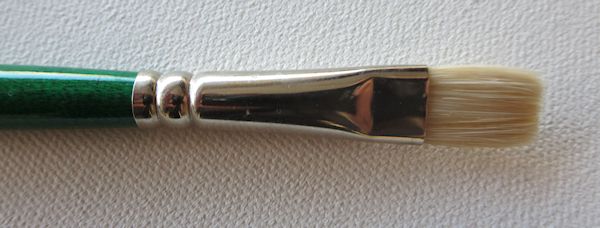
- Bright: A bright brush is the same as a flat brush but is curved inward at the tip, so it’s a bit shorter and springier.
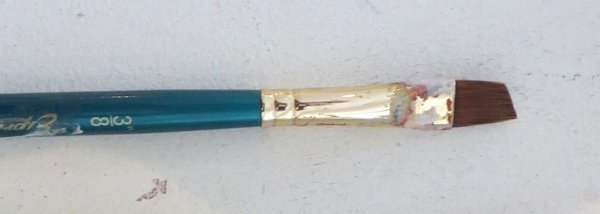
- Angular: Depending on the angle you hold the brush, the angular brush may work more like a round brush than a flat. Because they are so versatile, they are one of my favorite watercolor brushes to use.
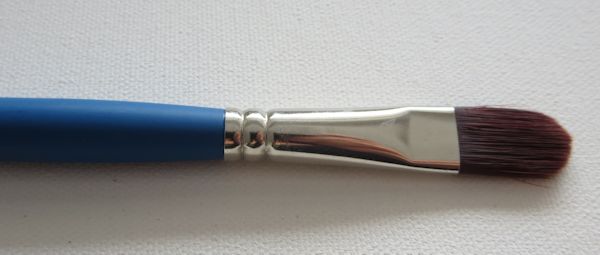
- Filbert: Filbert brushes have a flat ferrule and are oval shaped; they are often used to paint foliage.
Wash brushes
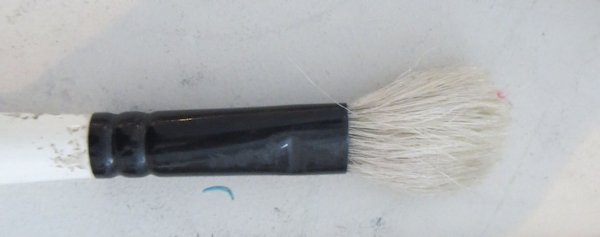
1. Mop
Mop brushes have lots of soft hair that will hold a large quantity of water and are good for painting washes in large areas; they are usually made from squirrel or goat hair.
2. Hake
Hake brushes are made by hand in Japan with goat hair; they are very soft and good for laying big washes.
Detail brushes

1. Spotters
Good for painting details, because they have a very short hair length, the brush won’t bend when painting tiny dots or details.
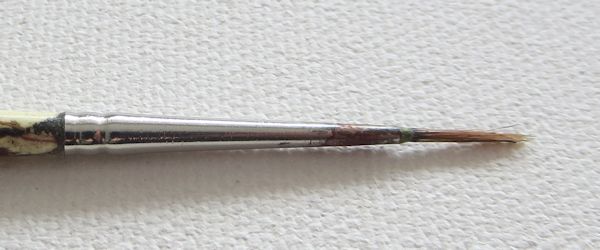
2. Riggers
The rigger brush was originally used for lettering and will work great for anything that requires thin lines like grass.
Materials
Usually, brushes made from natural materials will be more expensive, hold more water and have a better ability to retain their shape and last longer, although nowadays, synthetic brushes can approach the quality of those made from natural materials.
1. Kolinsky sable
These brushes are very absorbent and retain their shape very well. They’re made from winter coat pelt of a male kolinsky (a species of weasel).
Note: Regulation on these brushes is not very specific yet, so you’ll find a lot of variations in the quality of the kolinsky sable brushes. Brushes made from the coat of females or from a male’s spring coat are all a bit inferior in quality from the male’s winter coat pelt.
2. Red sable
Red sable are good quality and a bit less expensive than kolinsky brushes.They have a natural spring and good color holding capacity. They are made from different species of marten.
3. Squirrel, ox and goat
Brushes made from squirrel are very soft; goat is still quite soft and more affordable; ox comes from the hairs of cattle and is a bit thicker than squirrel. All those brushes won’t hold a point as well as the sable and kolinsky brushes.
4. Synthetic
Made from nylon or polyesters, synthetic brushes are less expensive and often their quality comes quite close to natural hair brushes ,although they might wear a bit faster
Sizes
The most common sizes of watercolor brushes range from from #0000 to #24 (about 3/4″), but you can find sizes up to a #50; the smaller the number, the smaller the size of the brush.
Note: Depending on the manufacturer there could be a small variation in sizes.
[box type=”shadow”]See also our 5 tips for caring for your paintbrushes and our post on the 6 supplies you’ll need to start painting watercolors. Then, hone your watercolor techniques in the brand new Craftsy class Watercolor Flower Bouquet with Mary P. Murphy.

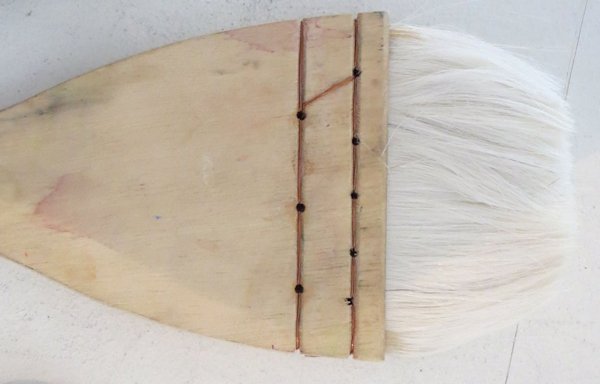
Share tips, start a discussion or ask one of our experts or other students a question.
No Responses to “Fine Art Friday: Types of Watercolor Brushes”